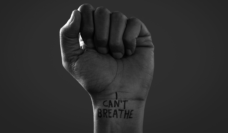During emergencies, you call 911. During urgent but not-quite-emergency situations, who do you call? Most likely… still 911.
There were more than 200 million 911 calls placed in 2021, and an analysis across 9 cities found that, on average, 60% of calls consisted of non-criminal situations (i.e., minor complaints, concerns, and/or disturbances). Only 0-7% involved violent crime (i.e., homicide, rape, robbery, and/or aggravated assault).
The default response? Sending armed police as first responders. Historically, the “broken windows” theory has been used to justify having a heavy police presence in neighborhoods. The theory suggests that minor disorders can spiral into more serious misconduct; therefore, focusing on minor crime can discourage serious crime.
In practice, however, aggressive policing can have negative impacts on vulnerable groups. Individuals with untreated mental illness have 16 times the risk of being killed during police encounters but commit under 10% of violent acts. Individuals experiencing homelessness and communities of color also frequently bear the brunt of over-policing.
Some cities have reduced police response to 911 calls altogether, sending clinicians or other specialists instead. But the question remains: how does moving away from sending in the police affect crime?
To evaluate how these alternative response models affect reports of both minor and serious offenses, Thomas Dee and Jaymes Pyne examined the outcomes of Denver’s Support Team Assistance Response program (STAR). In select precincts, non-violent calls were routed to a mobile crisis response team consisting of two health care staff. Police were only requested when deemed necessary.
Dee and Pyne coded the offenses that were reported as either related to STAR (the program’s target calls) or unrelated to STAR.
The figure above shows changes in offense rates before and after implementation of the program (vertical line). There were significant reductions in STAR-related offenses after the program was put in place, while STAR-unrelated offenses experienced little change. This suggests that reducing police response to non-violent calls did not impact reports of violent calls.
Most importantly, decreasing policing of minor offenses did not lead to an increase in serious offenses, disproving the fears underlying the “broken windows” theory. Instead, community response models may be effective ways to reduce burden on police while increasing contact between non-violent individuals and health care specialists.
Databyte via Thomas S. Dee and Jaymes Pyne. A community response approach to mental health and substance abuse crises reduced crime. Science Advances, 2022.














